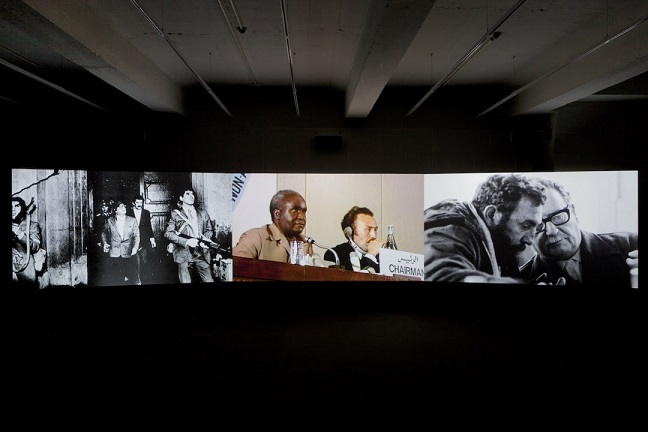Luke Willis Thompson, “autoportrait” (2017), installation view at Chisendale Gallery, commissioned by Chisendale Gallery and produced in partnership with Create (courtesy the artist; photo by Andy Keate)
At just 30 years old, Thompson is by far the youngest of this year’s Turner Prize nominees — Prodger was born in 1974 and Mohaiemen in 1969, while Forensic Architecture was founded by the British-Israeli architect Eyal Weizman in 2011. Last year was the first time the Turner had done away with its requirement that nominees be under 50 years old, which allowed the eventual winner — sculptor Lubaina Himid, who is in her 60s — to be eligible.
The Turner Prize is contemporary art’s most famous award, though only British artists (loosely defined) are eligible. It was established in 1984, and its past winners include Gilbert & George, Anish Kapoor, Rachel Whiteread, Damien Hirst, Gillian Wearing, Chris Ofili, Steve McQueen, Grayson Perry, Susan Philipsz, and Laure Prouvost. It comes with a £25,000 (~$35,000) purse for the winner and £5,000 (~$7,000) each for the runners-up.
Naeem Mohaiemen, “Two Meetings and a Funeral” (2017), three-channel digital video installation, color, sound, 85 minutes, on view in Kassel for Documenta 14 (photo by Michael Nast)
 Charlotte Prodger, “Stoneymollan Trail” (2015, still), single-channel video with sound, 43 minutes (courtesy of the artist, Koppe Astner, Glasgow, and Hollybush Gardens, London)
Charlotte Prodger, “Stoneymollan Trail” (2015, still), single-channel video with sound, 43 minutes (courtesy of the artist, Koppe Astner, Glasgow, and Hollybush Gardens, London)






